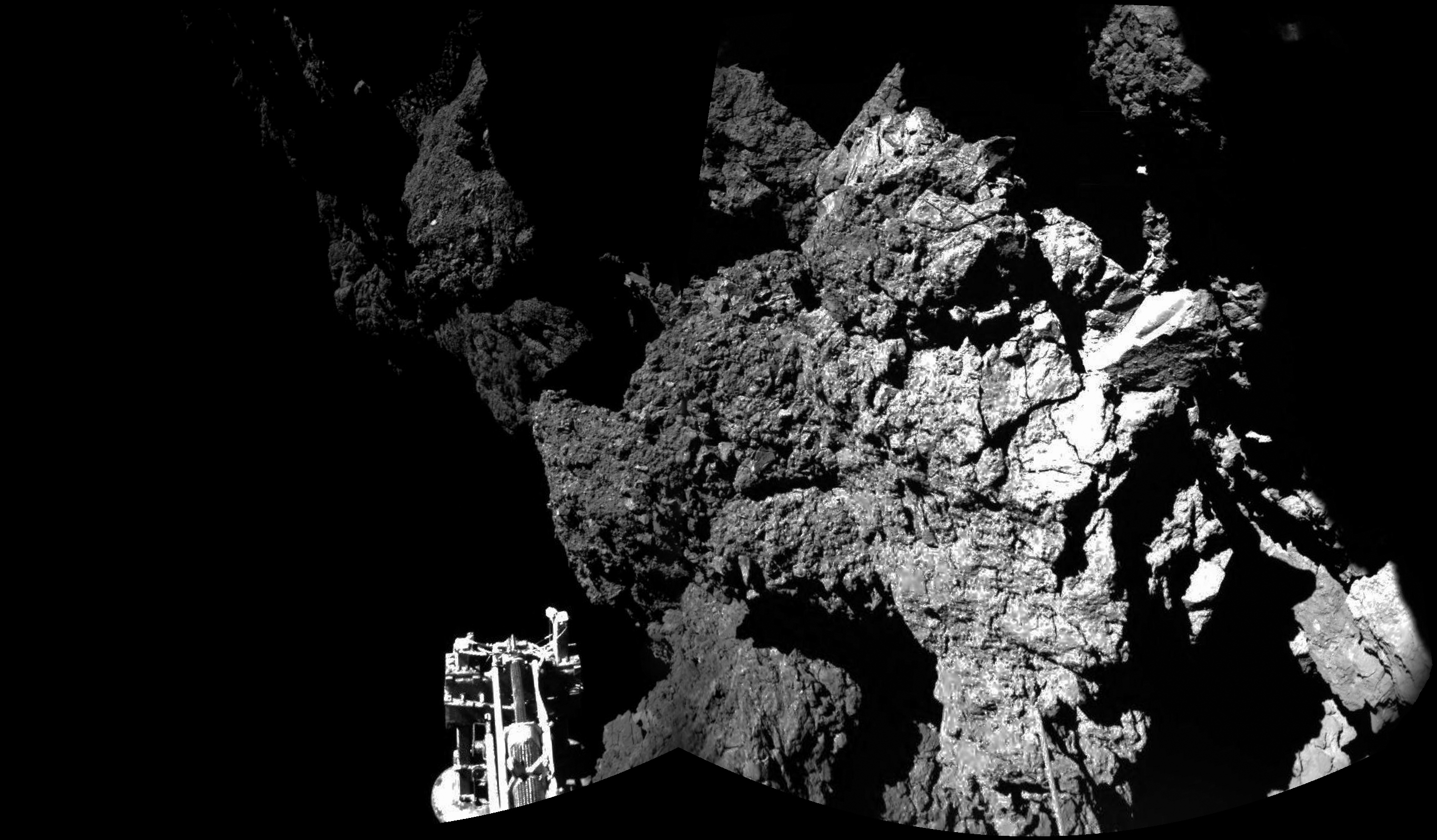
DARMSTADT, Germany — Europe’s Philae lander radioed home Thursday, sending the first picture from the surface of a comet hours after a dramatic descent that apparently culminated in bouncing hundreds of meters across the distant world before coming to rest.
The first image from the lander’s CIVA instrument system — a set of seven micro-cameras designed to take panoramic and 3D images — was released Thursday by the European Space Agency. Composed of two individual image frames, it shows the dark, rocky surface of comet 67P/Churyumov-Gerasimenko and one of Philae’s three landing legs.
Ground controllers received signals from Philae on Thursday after the probe went silent overnight while the mission’s Rosetta mothership repositioned itself to relay lander data back to Earth.
Mission officials said it was not clear where the lander ended up on the comet, but evidence shows the probe is tilting and at least one of its legs appears to be off the comet’s surface. Officials speaking in a press briefing on the status of Philae from CNES — the French space agency — said the craft’s solar panels appear to only be generating electricity about 90 minutes every 12 hours.
Phillipe Gaudon, head of the Philae lander team at CNES, told reporters in Toulouse around midday Thursday that he estimates the lander has between 50 and 55 hours of battery life left.
Engineers are studying whether they can order Philae to use deployable mechanisms — such as a drilling system or harpoon anchors that did not fire during Wednesday’s descent — to upright and stabilize the lander. But officials cautioned using such devices to move Philae could damage the lander or nudge it from its position.
Data from Philae’s instruments — and possibly imagery from Rosetta still in orbit around the comet — could help ground teams locate the lander, according to Marc Pircher, head of the CNES space center in Toulouse.
Philae’s science, operations and navigation center is in Toulouse, and the lander control center is operated by DLR — the German Aerospace Center — in Cologne, Germany. ESA’s Rosetta mission control, which disseminates all data from the mission, is based in Darmstadt, Germany.
Pircher said scientists likely do not have details of the terrain in Philae’s current location because it was not deemed a safe landing site.
Philae’s initial landing site was right on target, scientists said.
Measurements from the lander’s magnetometer instrument detected Philae bounced twice and touched down on the comet three times, finally settling down about two hours after the initial landing, according to a blog post on the European Space Agency’s website.
The magnetometer data also show the lander rotated on its vertical axis after the first touchdown, ESA said.
Officials in Toulouse said the age of Philae’s pyrotechnics — the mission launched more than 10 years ago — may have caused the trouble activating the lander’s harpoon anchors.
“The lander remains unanchored to the surface, but the instruments are running and are delivering images and data,” ESA wrote in a blog post Thursday.
Follow Stephen Clark on Twitter: @StephenClark1.



